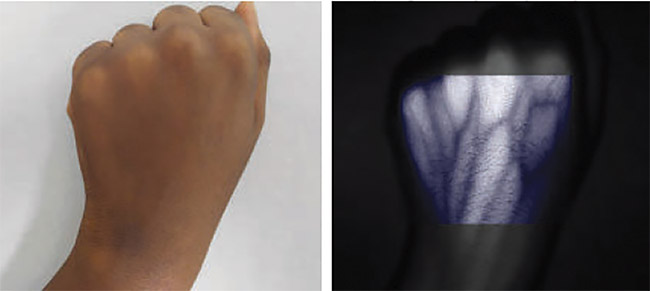Full company details
SPECTROLIGHT Inc.
 19800 MacArthur Blvd., Suite 300
19800 MacArthur Blvd., Suite 300
Irvine, CA 92612
United States
Filtering Visible Light According to Wavelength and Bandwidth
Photonics Spectra
May 2020Industries that depend on broadband light sources will benefit from various filtering options.JUN HEE KANG, SPECTROLIGHT INC.
Broadband light sources such as
supercontinuum lasers and lamps have been in high demand in the photonics industry due to their versatility and optimal output power. Some supercontinuum lasers have an output power in the range of tens of watts with a wavelength range that covers the entire UV-VIS range and a portion of the NIR region. With these performance specifications, the combination of a tunable filter and a broadband light source is more efficient than multiple discrete light sources.
Light sources with tunable filters have the potential for increased professional applications in bioimaging, the semiconductor industry, medical devices (Figure 1), and material characterization
1. For bioimaging, broadband light sources with tunable filters are used as an illumination source for fluorescence and hyperspectral imaging
2. These tunable light sources are an essential tool for optical sensor (CMOS and CCD) calibration and also for characterization of semiconductors such as solar cells.

Figure 1. A filter in a medical device used to visualize subcutaneous blood vessels in real time. Courtesy of iiSM Inc.
For the various applications of broadband light sources, an optimal selection of wavelength and bandwidth is necessary. Currently, there are several ways of filtering light to select the desired center wavelength and bandwidth. Each method has its own advantages and limitations.
The ability to smoothly vary the center wavelength and bandwidth is expected to lead to widespread use in various applications, from materials research to clinical biopsies.
Filters. Filters are one of the most traditional ways of selecting center wavelength and bandwidth of broadband light. Conventional filters are typically based on thin-film dielectrics, which use interference effects to transmit or reflect desired wavelengths. These filters can be designed to achieve optimal performance such as high transmission and high out-of-band suppression to effectively select the desired center wavelength and bandwidth. One major limitation of filters and filter wheels is the lack of flexibility for center wavelength and bandwidth. Once produced, the center wavelength and bandwidth cannot be changed. If the application requires another wavelength and/or bandwidth, then an additional filter is necessary.
Monochromators. A monochromator is a traditional method of flexibly selecting the center wavelength and bandwidth of a broadband light source. When used, it requires either a diffraction grating or dispersive prism in which incident light
is deflected at various angles, depending on the wavelength. Generally, a slit can
be placed in the path of the deflected light to select the center wavelength and bandwidth. And an additional filter is typically combined with a monochromator. The downside of this method is reduced transmission efficiency and low out-of-band suppression. Because components have a low damage threshold, monochromators can’t be used with high-power lasers.
‘Niche’ tunable filter technologies.
There are a few other recent niche technologies that can be used to replace both monochromators and filters. These are acousto-optic tunable filters (AOTFs), liquid crystal tunable filters (LCTFs), and angle-dependent tunable filters (ADTFs). An acousto-optic tunable filter relies on a specialized birefringent crystal with optical properties that depend on interactions with acoustic waves. With this technology it is possible to control the wavelength and intensity of one or more beams simultaneously. The downside of this technology is low transmission efficiency and low out-of-band suppression, which — similar to monochromators — makes additional filters necessary. Another type of tunable filter, a liquid crystal tunable filter, uses an electronically controlled liquid crystal element to select the target wavelength and suppress other wavelengths. This method has low damage threshold and is polarization dependent, which means transmission efficiency decreases dramatically.
A new method that relies on angle-dependent tunable filters can overcome the above-mentioned limitations
3. It has high out-of-band blocking (>OD 6) for all out-of-target wavelengths, and no need for additional filters. It has high transmission efficiency (>75%), which means the user will be able to get more signal compared to other tunable filters. The main feature contributing to this high efficiency is its polarization independence. The ability to smoothly vary the center wavelength and bandwidth is expected to lead to widespread use in various applications, from materials research to clinical biopsies.
Meet the author
Jun Hee Kang, Ph.D., is an applications scientist at Spectrolight Inc. He has a background in biochemistry and fluorescence imaging.
References
1. L. Bei et al. (2004). Acousto-optic tunable filters: fundamentals and applications as
applied to chemical analysis techniques.
Prog Quant Electron, Vol. 28, Issue 2,
p. 67,
www.doi.org/10.1016/S0079-6727(03)00083-1.
2. H.-T. Lim and V.M. Murukeshan (April 2016). A four-dimensional snapshot
hyperspectral video-endoscope for bio-
imaging applications.
Sci Rep, Vol. 6, Article 24044,
www.doi.org/10.1038/srep24044.
3. P.F. Favreau et al. (Jan. 2014). Thin-film tunable filters for hyperspectral fluorescence microscopy.
J Biomed Opt, Vol. 19, Issue 1,
www.doi.org/10.1117/1.JBO.19.1.011017.